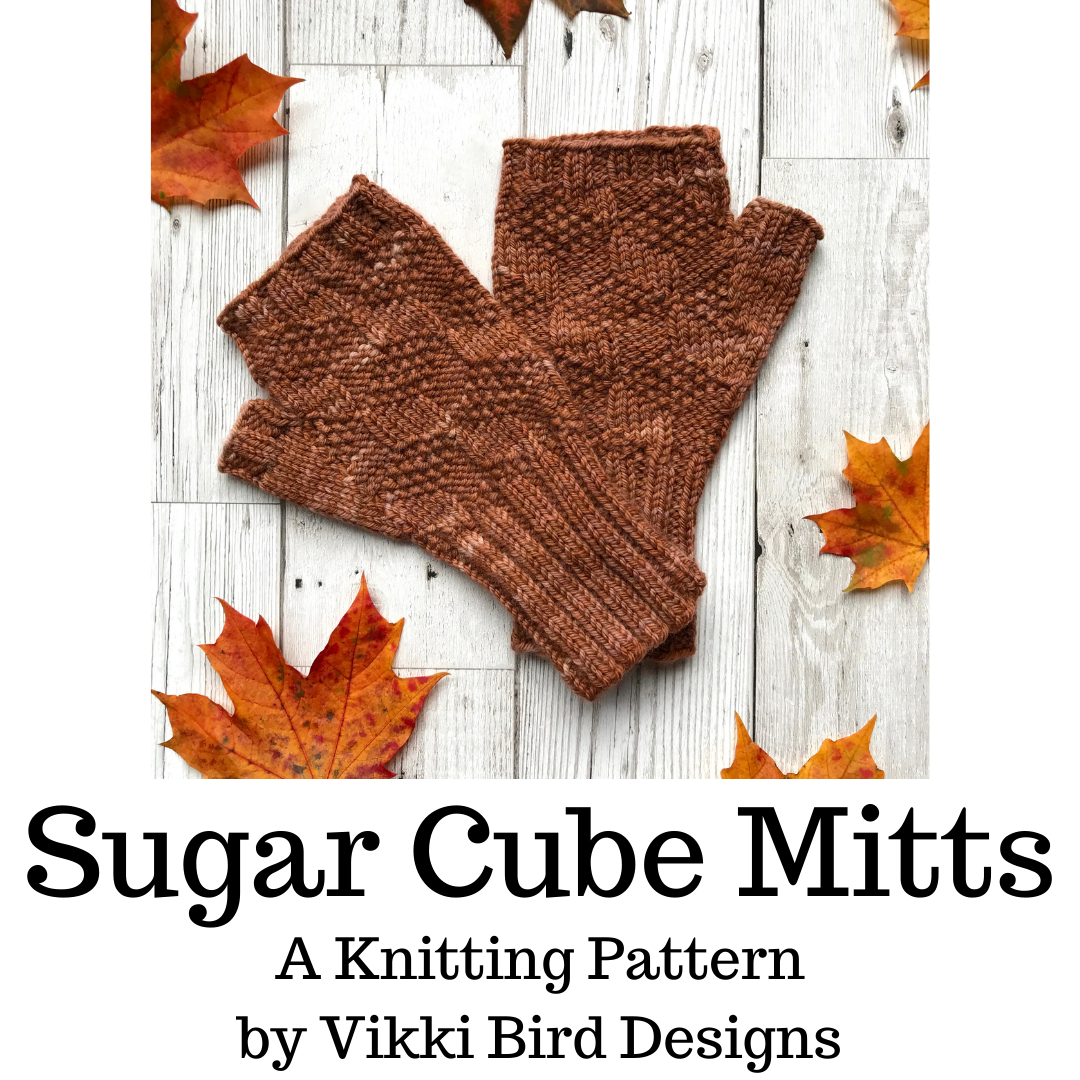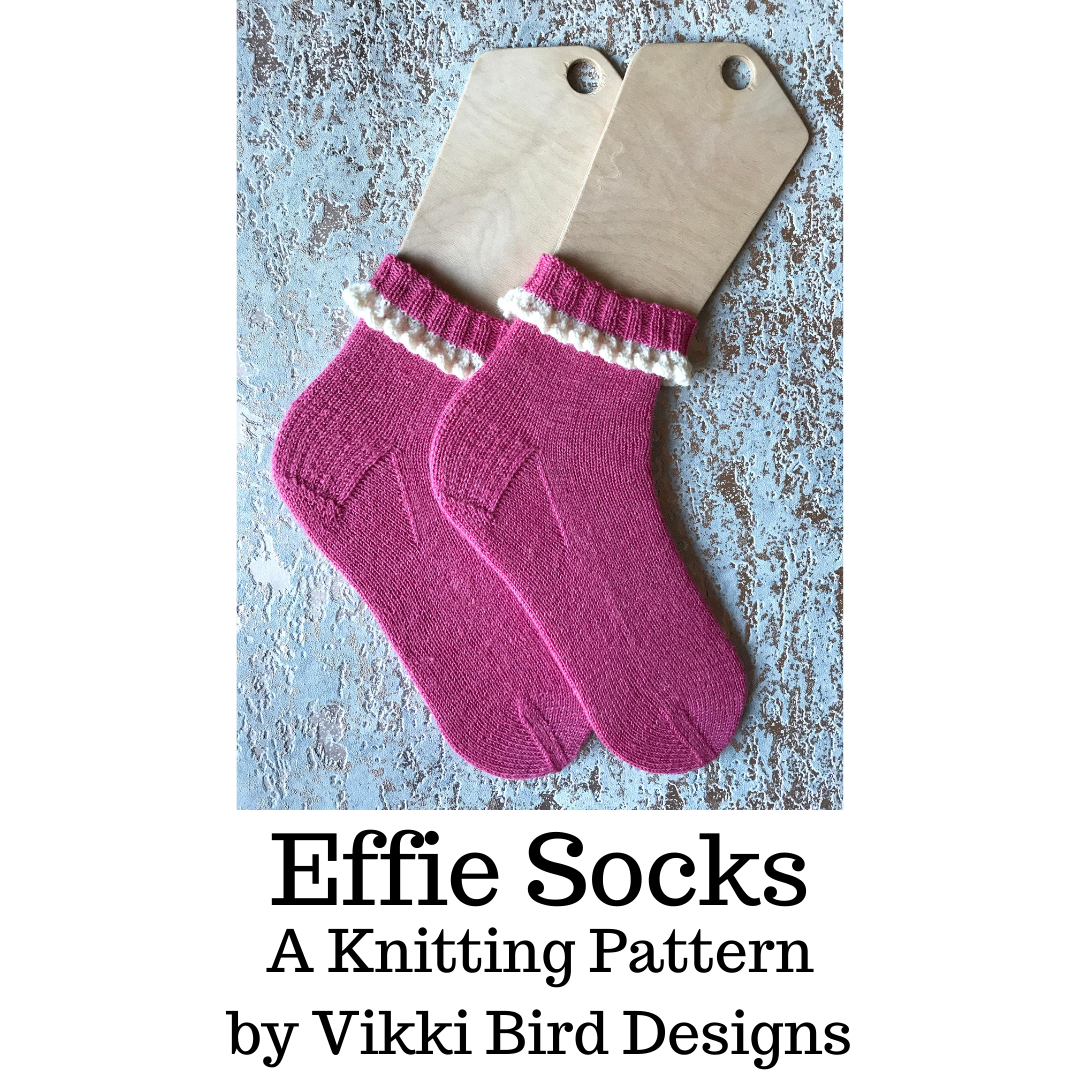Sugar Cube Mitts
On Sale
£4.50
£4.50
This listing is for the Sugar Cube Mitts knitting pattern.
There are separate listings for the matching hat and cowl, alternatively you can buy all three patterns as a set here.
2020 has been a strange old year: with a pandemic shutting all of us up in our homes, one thing I really missed was coffee-shop knitting. The Sugar Cube Knits set is a homage to this activity, featuring a simple textured stitch pattern, made up of knits and purls, that looks like stacked sugar cubes.
As soon as the first chill of autumn is in the air, I grab my fingerless mitts. Fingerless mitts are perfect for protecting your hands from the cold while still allowing you to get on with your life – it’s a lot easier to use your phone or sort your change while wearing fingerless mitts than full mittens or gloves! These fingerless mitts feature the textured Sugar Cube pattern on the backs of the hands; the pattern is scaled between sizes, which means it is always in proportion with the rest of the mitt.
The mitts use a beautiful tonal brown DK yarn, dyed specially by Blue Fern Yarns, to evoke the warm tones of brown sugar. The merino/bamboo blend really helps the stitches to pop.
The mitts are worked in the round from the bottom up, starting with a deep ribbed cuff, then the main body of the mitt is worked alongside the thumb gusset. The thumbs stitches are placed on hold and the mitt is completed. Finally, the thumb is finished with a ribbed top cuff.
The pattern is needle-neutral, so you can knit these mitts on your choice of DPNs, short circulars or magic loop.
Sizes
a: Palm circumference
14.5 (18, 22) cm [5.75 (7.25, 8.75) in]
b: Hand length
15.5 (19, 23.5) cm [6.25 (7.5, 9.25) in]
Choose a size that is 1–2.5 cm (0.5–1 in) smaller than your palm circumference, measured around the knuckle joint of your four fingers.
Tension
80 (115, 175) m [90 (130, 195) yds] of DK weight yarn
I would recommend using a smooth DK weight yarn with good stitch definition to make the stitches pop. The sample is knitted in merino/bamboo, but a merino or merino/nylon blend would also work well. If you want a warmer pair of mitts, you can use a non-superwash wool.
Needles
The instructions are for the smallest size, with larger sizes in parentheses: S (M, L).
The sample is knitted in Blue Fern Yarns Boo (DK, 225 m per 100 g skein, 80% superwash merino, 20% bamboo) in the colourway Muscovado and size M. Yarn support was provided by Blue Fern Yarns; you can find all their yarns on their website: https://www.bluefernyarns.co.uk/ This colourway was dyed specifically for this pattern.
If you are knitting the mitts in hand-dyed yarn and are working from more than one skein, you may wish to alternate the skeins throughout to avoid a colour jog when you start a new skein.
This pattern was tech edited by Jo Torr.
There are separate listings for the matching hat and cowl, alternatively you can buy all three patterns as a set here.
2020 has been a strange old year: with a pandemic shutting all of us up in our homes, one thing I really missed was coffee-shop knitting. The Sugar Cube Knits set is a homage to this activity, featuring a simple textured stitch pattern, made up of knits and purls, that looks like stacked sugar cubes.
As soon as the first chill of autumn is in the air, I grab my fingerless mitts. Fingerless mitts are perfect for protecting your hands from the cold while still allowing you to get on with your life – it’s a lot easier to use your phone or sort your change while wearing fingerless mitts than full mittens or gloves! These fingerless mitts feature the textured Sugar Cube pattern on the backs of the hands; the pattern is scaled between sizes, which means it is always in proportion with the rest of the mitt.
The mitts use a beautiful tonal brown DK yarn, dyed specially by Blue Fern Yarns, to evoke the warm tones of brown sugar. The merino/bamboo blend really helps the stitches to pop.
The mitts are worked in the round from the bottom up, starting with a deep ribbed cuff, then the main body of the mitt is worked alongside the thumb gusset. The thumbs stitches are placed on hold and the mitt is completed. Finally, the thumb is finished with a ribbed top cuff.
The pattern is needle-neutral, so you can knit these mitts on your choice of DPNs, short circulars or magic loop.
Sizes
a: Palm circumference
14.5 (18, 22) cm [5.75 (7.25, 8.75) in]
b: Hand length
15.5 (19, 23.5) cm [6.25 (7.5, 9.25) in]
Choose a size that is 1–2.5 cm (0.5–1 in) smaller than your palm circumference, measured around the knuckle joint of your four fingers.
Tension
- 22 sts and 32 rnds = 10 cm (4 in) in stocking stitch worked in the round on 4 mm (US 6) needles after wet blocking, or size needed to obtain correct tension
- 22 sts and 34 rnds = 10 cm (4 in) in Sugar Cube pattern worked in the round on 4 mm (US 6) needles after wet blocking, or size needed to obtain correct tension
80 (115, 175) m [90 (130, 195) yds] of DK weight yarn
I would recommend using a smooth DK weight yarn with good stitch definition to make the stitches pop. The sample is knitted in merino/bamboo, but a merino or merino/nylon blend would also work well. If you want a warmer pair of mitts, you can use a non-superwash wool.
Needles
- 3.75 mm (US 5) and 4 mm (US 6) DPNs, set of 5, or
- 3.75 mm (US 5) and 4 mm (US 6) circular needles at least 80 cm (32 in) in length to work magic loop, or
- 3.75 mm (US 5) and 4 mm (US 6) circular needle, 22.5 cm (9 in) in length – note: if you choose to use a small circular needle, you will also need DPNs to work the thumbs
- Stitch markers x 3
- Waste yarn
- Mitten blockers (optional)
The instructions are for the smallest size, with larger sizes in parentheses: S (M, L).
The sample is knitted in Blue Fern Yarns Boo (DK, 225 m per 100 g skein, 80% superwash merino, 20% bamboo) in the colourway Muscovado and size M. Yarn support was provided by Blue Fern Yarns; you can find all their yarns on their website: https://www.bluefernyarns.co.uk/ This colourway was dyed specifically for this pattern.
If you are knitting the mitts in hand-dyed yarn and are working from more than one skein, you may wish to alternate the skeins throughout to avoid a colour jog when you start a new skein.
This pattern was tech edited by Jo Torr.


























